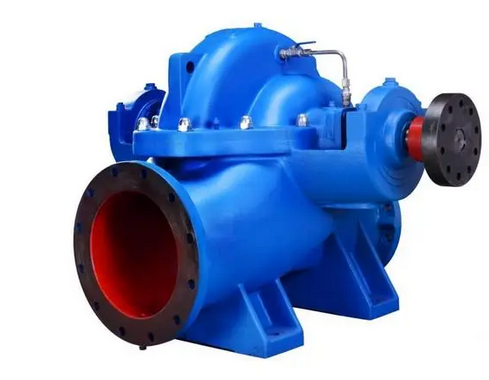Installation and commissioning of split case pump
The installation and commissioning of the split center pump is a key step to ensure its normal operation and efficient performance. The following is a detailed description of the installation and commissioning of the split center pump:
I. Installation of the split center pump
1. Selection of installation location
Vertical height: The vertical height of the split center pump from the river surface or the water surface of the water inlet pool must be less than the maximum suction head allowed by the pump when measuring the water level to ensure that the unit is not submerged during the flood season.
Close to the water source: Under the condition of ensuring safe operation, the installation location of the split center pump should be as close to the water source as possible to reduce the length of the water inlet pipe and unnecessary elbows and joints, and reduce the risk of failure.
Foundation requirements: The foundation for installing the water pump should be solid and dry, which can effectively avoid collapse caused by vibration during operation and dampness of the motor.
2. Installation of centrifugal pumps and motors
Base installation: When the pump and motor are directly connected, an integral base should be used and the flatness of the base should be ensured.
Axis alignment: For units directly connected by couplings, the pump shaft and motor shaft must be concentric to prevent damage to the machine parts due to vibration.
Belt drive: If belt drive is used, the center distance between the two belts should not be less than 2 meters, the tight side of the belt should be at the bottom, and the loose side should be at the top.

3. Installation of water inlet and outlet pipes
Solid support: The support of the water inlet pipe must be firm and cannot fall on the pump. The joints should be strictly sealed to prevent air leakage.
Reasonable position: No part of the water inlet pipe should be higher than the upper edge of the water inlet of the center-open pump to prevent air accumulation in the pump and affect the water absorption effect. The elbow cannot be connected to the pump inlet, and a straight pipe with a diameter of about 3 times should be installed.
Bottom valve installation: The water inlet pipe with a bottom valve should be installed vertically. If it must be installed at an angle due to terrain restrictions, the angle between it and the water surface should be greater than 45 degrees, and the direction of the valve shaft pin should be horizontal.
4. Other precautions
The installation site should be selected in a flat, dry, well-ventilated place, close to the water source, and convenient for connecting pipes.
Before installation, check whether the pump body and pipeline have debris, mud and other substances to avoid affecting the normal operation of the pump.
Ensure that the pump body is level during installation and use a level meter for inspection.
Select appropriate pipes according to the inlet and outlet diameters of the pump, and ensure that the pipes are firmly connected and leak-free.
II. Debugging of split-center pumps
1. Cleaning and inspection
Before debugging, all parts of the water pump should be cleaned, inspected and trimmed to ensure that there is no damage or foreign matter.
2. Assembly and positioning
When assembling the water pump, proceed in the opposite order to disassembly. After assembly, perform positioning adjustments to ensure that the center line of the impeller outlet is aligned with the center line of the guide vane inlet.
3. Measurement and adjustment
Measure the total movement of the rotor in different ways (such as inserting toothed pads, replacing the balance disc with old retaining sleeves, etc.).
Adjust the concentricity of the rotor and the stationary part to ensure that the radial clearance between the rotor and the stationary part meets the requirements.
Adjust the position of the bearing frame and the bearing shell so that the bearing shell tightening force, top clearance and side clearance reach the specified value.
4. Trial operation and inspection
After installation, test the pump to check whether the pump is operating normally and whether there are abnormal sounds and water leakage.
Check whether the clearances between the rotor and the stator, the total axial movement of the rotor, etc. meet the requirements.
Check whether the parallelism deviation of the dynamic and static balance disc is less than 0.02mm, and whether the up and down and left and right errors of the fastening bolts of the pump housing are no more than 0.05mm.
5. Flow regulation
According to needs, the flow of the split pump can be adjusted by adjusting the opening of the outlet valve, using a bypass valve, adjusting the impeller diameter or adjusting the speed of the impeller.




